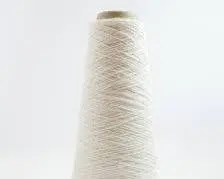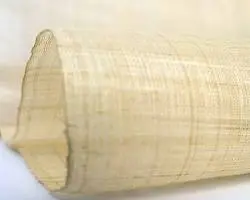What if you could turn one of India's largest agricultural by-products into a globally demanded, premium, eco-friendly textile?
Welcome to the world of banana fiber. India, as one of the world's largest banana producers, creates millions of tons of banana stems annually. For centuries, this was considered agricultural waste. Today, it's a "green gold"—a strong, versatile, and biodegradable natural fiber that the global sustainable fashion and textile industries are desperately seeking.
For an Indian entrepreneur, this "waste-to-wealth" model is a massive export opportunity. This guide will cover the complete A-Z process of how to export banana fiber from India and identify the top European markets that are ready to buy it.
Part 1: Why Banana Fiber is a Golden Opportunity

The global market is shifting. Consumers are rejecting "fast fashion" and synthetic materials, demanding sustainable, eco-friendly, and circular-economy products. Banana fiber hits every one of these targets:
100% Eco-Friendly: It is a natural by-product, biodegradable, and requires no extra land or water to grow (since the plant is already grown for its fruit).
Incredible Versatility: Banana fiber isn't just one product. It can be processed into different grades, from coarse fibers for ropes and handicrafts to ultra-soft, lustrous yarns that rival silk.
High-Demand Applications: It's used in:
Fashion: Apparel, sustainable denim, and vegan "silk" sarees.
Home Textiles: Rugs, mats, and premium upholstery.
Industrials: Composites for automotive interiors, insulation, and high-quality paper (even currency notes!).

India's Unmatched Advantage: We are the source. With a massive banana cultivation footprint, Indian exporters have a direct, stable, and cost-effective supply chain, which also empowers local farming communities.
Part 2: The A-Z Export Process: Your Step-by-Step Plan
Here is how you can build your banana fiber export business from the ground up.
Step 1: Your Legal & Business Foundation
Before you do anything else, get your business registered.
Register Your Company: Form a legal entity (e.g., Sole Proprietorship, LLP, Private Limited Company).
Get a PAN Card: Obtain a business PAN card.
Open a Business Current Account: You'll need a dedicated bank account for all your export transactions.
Step 2: Core Export Registrations
These are your non-negotiable licenses to trade internationally.
IEC (Importer-Exporter Code): This is your 10-digit license, mandatory for all import-export. You can apply for it online from the DGFT (Directorate General of Foreign Trade).
GST Registration: You must have a GSTIN. Exports are "zero-rated" under GST, meaning you don't charge GST on your export sale and can claim a refund (Input Tax Credit) on the GST you paid for your raw materials and processing.
RCMC (Registration-Cum-Membership Certificate): This certificate proves you're a registered exporter with a specific Export Promotion Council (EPC). For banana fiber, your most likely EPCs are:
APEDA (Agricultural and Processed Food Products Export Development Authority), as it's an agricultural by-product.
National Jute Board, which often handles "Jute and Allied Fibres."
FIEO (Federation of Indian Export Organisations), which offers a general RCMC. Check with these councils to find the best fit for your specific product (raw fiber vs. yarn vs. fabric).
Step 3: Sourcing & Processing (The Value Addition)
This is where you create your value.
Sourcing: Partner with Farmer Producer Organizations (FPOs) or farmer co-operatives in major banana-growing states like Tamil Nadu, Andhra Pradesh, Maharashtra, and Gujarat. This ensures a steady supply of banana pseudo-stems.
Processing: You can export raw, processed fiber, but the real profit is in value addition. The process generally involves:
Extraction: Using a banana fiber extractor machine (decorticator) to separate the fibers from the stem.
Degumming: Boiling the fibers (often in an alkaline solution) to remove natural gums, making them softer and cleaner.
Drying: Sun-drying or machine-drying the fibers.
Spinning: Processing the soft, degummed fibers into yarn of various counts. This yarn is your highest-value product.
Step 4: Packaging & Logistics
Presentation and preservation are key.
Packaging:
Raw Fiber: Tightly compressed into bales, wrapped in moisture-proof material (like HDPE) to prevent spoilage.
Yarn: Wound on cones, packed in cartons with plastic liners.
Fabrics: Rolled onto sturdy tubes and wrapped in plastic.
HS Code: This is the universal code for your product. It's critical for customs. Common HS Codes for banana fiber and its products fall under Chapter 53 (Other vegetable textile fibres). Look at codes like:
5305.00: "Other vegetable textile fibres...raw or processed but not spun."

5308.90: "Yarn of other vegetable textile fibres."
Logistics: Hire a good freight forwarder. They will handle everything from booking your container (sea freight is standard) to managing all port and customs formalities.
Part 3: Mandatory Documents Checklist
For every export shipment, you will need this set of documents:
Commercial Invoice cum Packing List: The main bill for your buyer.
Bill of Lading (B/L) (for sea freight) or Airway Bill (AWB) (for air freight): The transport receipt from the shipping line.
Certificate of Origin (COO): Proves the goods are "Made in India."
IEC & GSTIN copies.
RCMC copy.
Quality Analysis Report: A lab-test certificate showing the fiber's strength, fineness, moisture content, etc. This is your biggest trust-builder with a buyer.
Fumigation Certificate: Often required for natural plant materials to certify they are free of pests.
Part 4: Top 3 European Buyers (The Market)
The European Union is the world's leader in sustainable regulations and consumer demand. They are actively looking for alternatives to cotton (high water use) and polyester (microplastics). Your top three target markets should be:
1. Germany 🇩🇪
Why They Buy: Germany is the industrial and "green" powerhouse of Europe. Their demand is twofold:
Technical Textiles: The German automotive industry (VW, BMW, Mercedes) is a world leader in using natural fiber composites for interior parts (door panels, dashboards) to reduce weight and improve sustainability.
Eco-Fashion: A massive, wealthy consumer base with a very high "green consciousness" actively seeks out and pays a premium for sustainable fashion and home goods.
How to Sell: Target B2B importers of industrial composites and eco-textile wholesalers.
2. Italy 🇮🇹
Why They Buy: Italy is the heart of global high-fashion and luxury textile manufacturing.
Innovation: World-renowned Italian textile mills (like in Prato and Biella) are constantly innovating, and banana fiber (especially "banana silk") is a celebrated new material for creating luxury fabrics.
High-End Fashion: Italian fashion houses are using these new fabrics to market "sustainable luxury" collections.
How to Sell: Target high-end yarn importers, textile mills, and fashion design houses. Quality and fineness (softness) are more important than price.
3. France 🇫🇷
Why They Buy: As the home of high fashion and a nation with strong government-led environmental policies, France is a key market.
Sustainable Fashion Mandates: France has strong "eco-design" and anti-waste laws that are pushing fashion brands (from luxury like Kering to mass-market) to adopt sustainable materials.

Brand-Conscious Market: "Banana fiber" is a great story, and French brands love to build a narrative around sustainable, innovative materials.
How to Sell: Target fashion brands directly, as well as distributors of sustainable fabrics and home furnishings.
Conclusion: Your Green Future
Exporting banana fiber from India is more than just a business opportunity; it's a chance to be part of a global "green" revolution. You are taking a local "waste" product and transforming it into a high-value, sustainable solution for the entire world.
The process requires professionalism, a strong focus on quality control, and a smart marketing strategy. But for those who are willing, the "green gold" in India's banana fields is ready to be harvested.
This video explores how to start a banana fiber manufacturing business, a great first step before exporting. A Guide to Starting Your Banana Fiber Business